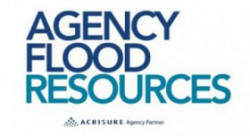April 1, 2017 NFIP changes comply with the requirements of the Biggert-Waters Flood Insurance Reform Act of 2012 (BW-12) and Homeowners Flood Insurance Affordability Act of 2014 (HFIAA). The changes bring further premium increases and rating clarifications on properties newly mapped into the Special Flood Hazard Area (SFHA), as well as Pre-FIRM substantially improved buildings.
Increase to Premiums and Surcharges
Beginning April 1, 2017, premiums will increase from an estimated average of $827 per policy to $878, for an average increase of 6.3%, according to FEMA. These amounts do not include the HFIAA surcharge or the Federal Policy Fee (FPF). When the HFIAA surcharge and FPF are included, the total amount billed the policyholder will increase from $953 to $1,005, for an average increase of 5.4%. Annual premium rate increases for some classes of policies are as follows:
- Premium rates for four categories of Pre-FIRM subsidized policies – non-primary residential properties, business properties, Severe Repetitive Loss (SRL) properties (which includes cumulatively damaged properties), and substantially damaged/substantially improved properties must be increased 25% annually until they reach full-risk rates;
- The average annual premium rate increases for all other risk classes are limited to 15% while the individual premium rate increase for any individual policy is simultaneously limited to 18%;
- The average annual premium rate increase for all other Pre-FIRM subsidized policies not covered by the first bullet above must be at least 5%.
Updated Multiplier Tables for Properties Newly Mapped into the SFHA
For calculating the premiums for properties Newly Mapped into the SFHA through December 2018, the PRP multipliers are tied to the date the property was newly mapped into the SFHA and the date of renewal. For the first year, these properties receive a PRP rate, while their subsequent premiums increase to full risk rates over time by using the PRP multiplier.
Rating Clarifications for Pre-FIRM Substantially Improved Buildings
According to FEMA Bulletin Summary, policies on substantially improved buildings must be rated based on the FIRM in effect at the time of reconstruction. Once the building has been substantially improved, all subsequent losses on that building will be adjusted based on the coverage limitations that apply for Post-FIRM buildings in SFHA.
Click here to read FEMA’s Entire Memorandum (.pdf).
Contact us today to find out how April 1, 2017 NFIP changes will affect your clients and to learn how we can help you find more favorable Private Market Flood Insurance alternatives for your clients.



